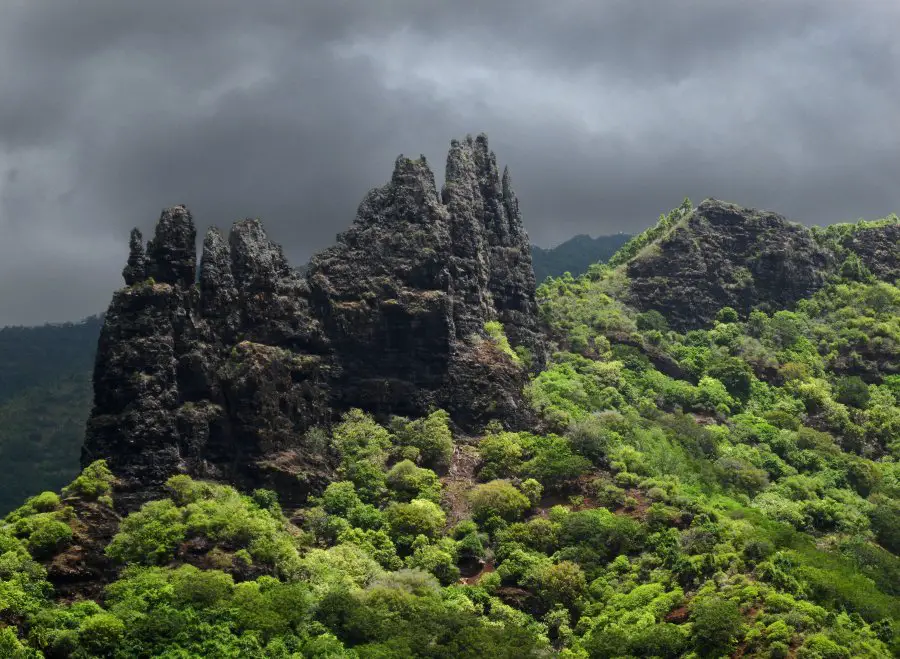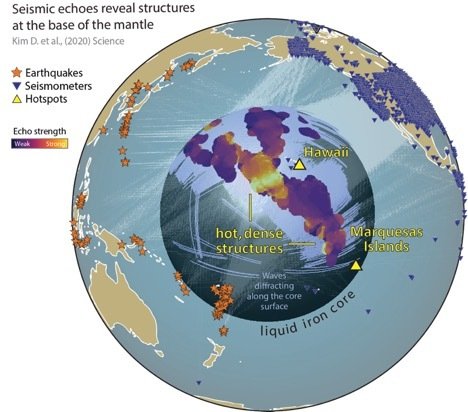Scientists Have Detected Vast Unidentified Structures Wrapped Around The Earth’s Core
Tags: News

According to a recent paper published in Science, researchers have successfully used a machine-learning algorithm to discover vast structures of dense material lying on the border of Earth’s liquid outer core and the lower mantle. The algorithm was developed to analyze galaxies and the phenomenon going on within our planet, and now it has found a mysterious zone 1800 miles below us!
Of the 2 vast structures of dense material, one located under the Marquesas Islands was previously unknown while the one under Hawaii has now been found to be much larger than previous estimates.
A team of scientists worked with the algorithm called Sequencer, led by a postdoctoral fellow at the University of Maryland and seismologist Doyeon Kim. They fed data from seismograms that were recorded during earthquakes between 1990 and 2018. With this special algorithm, the team analyzed 7000 measurements of earthquakes occurring around the Pacific Ocean.
Read: “We Want To Be A Leader In Apocalypse Technology” Says Elon Musk
While earthquakes are often studied as single identities or just grouped based on a local area, this is the first time that there is a dataset covering the entire Pacific Basin.
The seismic waves created by earthquakes on the surface travel deep inside the earth. Studying them gives scientists a glimpse of the underworld. Kim’s team focused on seismograms created by shear (S) waves, which travel near the border of the lower portion of the mantle and earth’s core.
“We normally like to use S waves because they are larger in amplitude and the data is more or less clean because there is less P wave traffic,” said Kim. “Because it diffracts along that surface, it’s a great phase to look for these tiny structures on top of the core-mantle boundary,” Kim noted.
When the S waves hit the structures, they produce ‘postcursors’, a type of echo-like signatures. These then indicate if there are any anomalies lying within the earth that are called ultra low-velocity zones (ULVZs).

Image: Doyeon Kim/University of Maryland
Scientists are not sure how ULVZs form but they are huge in size with diameters ranging in hundreds of kilometers and they are also dense enough to slow down waves.
In their research, Kim and his team found that the strongest postcursors occurred under the Marquesas Islands and Hawaii. This shows the existence of vast structures of dense material, two mega ULVZ zones.
“This is very interesting because this might indicate that mega-ULVZs are special and may host primitive geochemical signatures that have been relatively unmixed since early Earth history,” Kim said.
Sequencer uses unsupervised learning which is useful for processing complex datasets as found in seismology, astronomy, etc. while supervised learning algorithms sort information based on known labels, the ones like Sequencer work with unlabelled datasets.
“What if we don’t really know what to look for in the dataset?” explained Kim. “This is the typical question we’d like to think about because the lower mantle, the target of our study, still has so many unknowns. It’s not really surprising to find almost anything in the lower mantle because we cannot actually go inside and take a look at it with our bare eyes.”
Read: This Mexican Engineer Builds “Plastic Houses” That Can Absorb The Seismic Waves Of An Earthquake
“So, what we did here is find an optimal arrangement in the dataset itself. We’re not actually altering the dataset; we’re not doing anything but just rearranging and finding this optimal arrangement. That’s what Sequencer does.”
Kim and his team plan to expand their project to the Atlantic Ocean next and we would be thrilled to learn more about such vast structures of dense material lying below our feet!
Featured image:
Leave Comment: